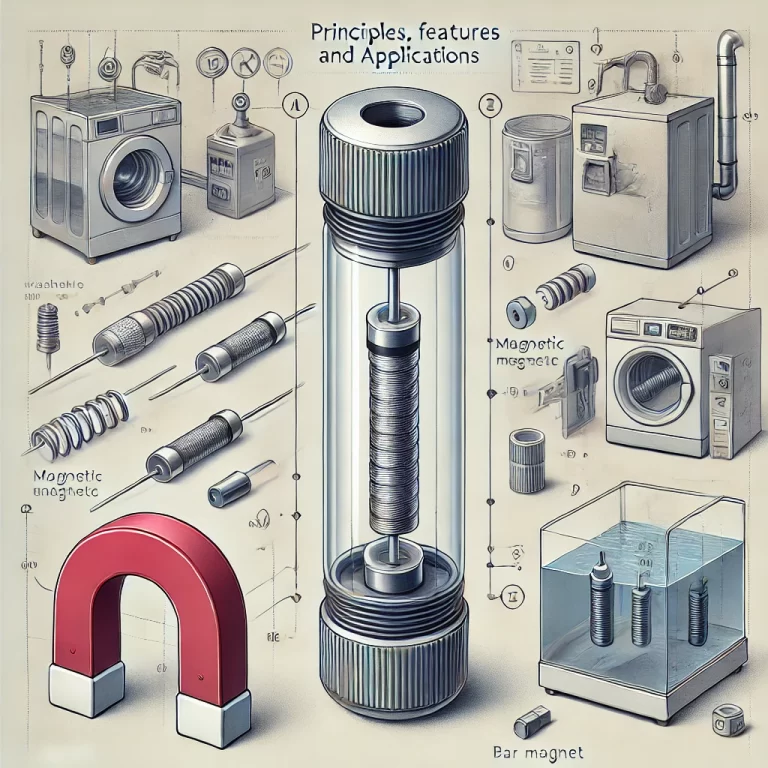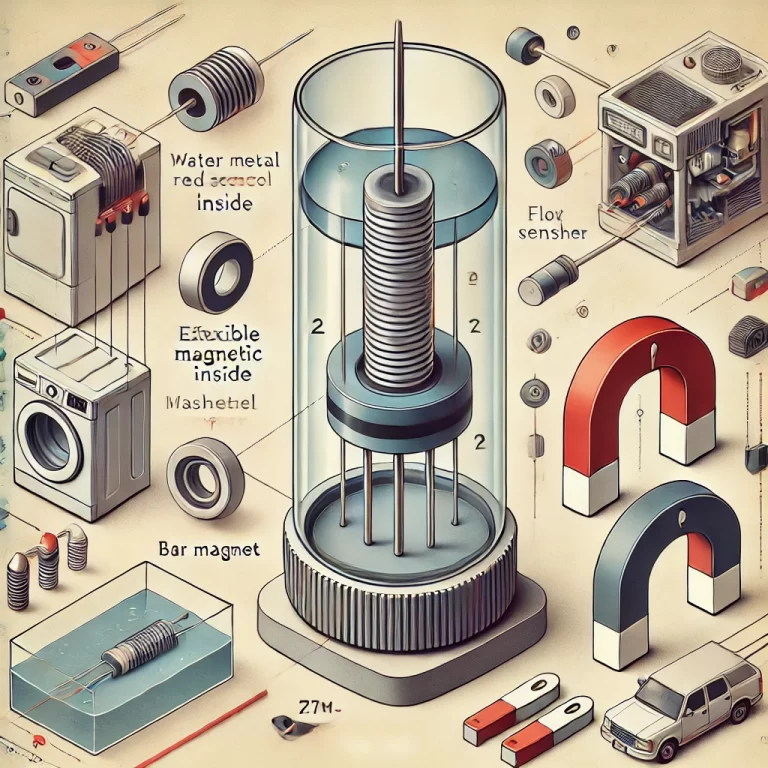1. Principles of Reed Switch Operation
Reed switches, also known as magnetic switches, are electrical switches controlled by an external magnetic field. They consist of two flexible metal reeds enclosed within a sealed glass tube. The gap between the reeds is very small. The working principle is as follows:
Magnetic Activation: When an external magnetic field is applied, the reeds become magnetized, developing opposite polarities. This causes the reeds to attract each other, closing the circuit.
Magnetic Deactivation: When the magnetic field is removed, the reeds demagnetize, returning to their original position and breaking the circuit.
Reed switches are generally available in two configurations:
Normally Open (NO): The default state is open, and the circuit closes in the presence of a magnetic field.
Normally Closed (NC): The default state is closed, and the circuit opens in the presence of a magnetic field.
The internal structure of a reed switch typically includes:
Reed blades: Flexible ferromagnetic metal strips.
Contact gap: The small distance between the reeds.
Sealed glass tube: Enclosing the reeds with an inert gas or vacuum to prevent oxidation.

2. Importance of Installation Orientation
The orientation of a reed switch during installation significantly affects its functionality. To ensure proper operation, the magnetic field must align correctly with the reeds to magnetize them effectively and allow the switch to operate as intended.
Example:
When using a bar magnet:
The north and south poles of the magnet should be parallel to the direction of the reeds. In this setup, moving the magnet closer will close the switch (in the case of an NO switch), and moving it away will open the switch.
If the magnet moves perpendicular to the reeds, insufficient magnetic force is applied, which may result in the switch failing to operate.
Proper alignment ensures reliable activation and deactivation, avoiding malfunctions due to incorrect magnetic field orientation.
3. Features and Applications of Reed Switches
Reed switches have specific design features that make them advantageous in various applications, especially where reliability and compactness are required.
Key Features:
High Reliability:
The sealed glass tube prevents moisture or oxidation, ensuring consistent performance over time.
The absence of mechanical contact points reduces wear and tear, extending operational life.
Fast Response Time:
Due to their lightweight construction, reed switches respond much faster than traditional relays, typically 5 to 10 times quicker.
Compact Design:
Their small size makes them ideal for use in tight spaces.
Applications:
Reed switches are used across multiple industries due to their versatility and reliability. Some common applications include:
Water Level Control:
Paired with a floating device, reed switches can monitor and control liquid levels in tanks, triggering actions like pumping or alarms.
Household Appliances:
Used in washing machines, refrigerators, and induction cookers to detect door closure and ensure safe operation.
Automotive and Industrial Uses:
Found in car door and window systems for position sensing or as part of larger sensor assemblies.
Industrial Automation:
Often integrated with magnetic level indicators or flow meters for real-time remote monitoring and control in factories.
Data Transmission:
When paired with magnetic level indicators, reed switch-based transmitters can relay water level data to centralized control systems.
Advantages:
Durability: Long operational life due to the sealed design.
Versatility: Usable in harsh environments where dust, moisture, or gas exposure would affect other switches.
Cost-Effectiveness: Affordable and easy to integrate into larger systems.
Limitations:
Despite their advantages, reed switches have certain drawbacks:
Low Current and Voltage Capacity: Limited switching capacity, making them unsuitable for high-power applications.
Sensitivity to Magnetic Interference: External magnetic fields can cause false activations.
Fragility: The glass enclosure is prone to damage if mishandled.

4. Summary and Future Perspectives
Reed switches are invaluable components in various applications due to their compact size, quick response, and high reliability. However, their limitations in handling high power and susceptibility to damage should be considered when selecting them for a specific use.
Future Trends:
With advancements in materials and manufacturing techniques, modern reed switches are being adapted for more complex and demanding environments. Innovations may include:
Enhanced resistance to magnetic interference.
Increased durability through improved glass and reed materials.
Integration with IoT (Internet of Things) technologies for smarter sensing and control solutions.
By understanding their principles and limitations, reed switches can be effectively utilized in a wide range of applications, from simple household devices to complex industrial systems.
